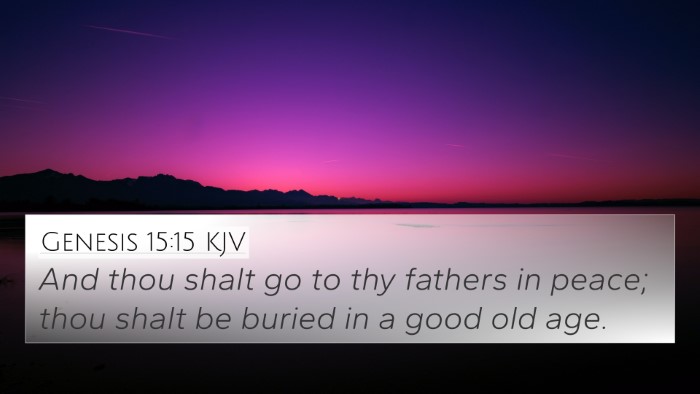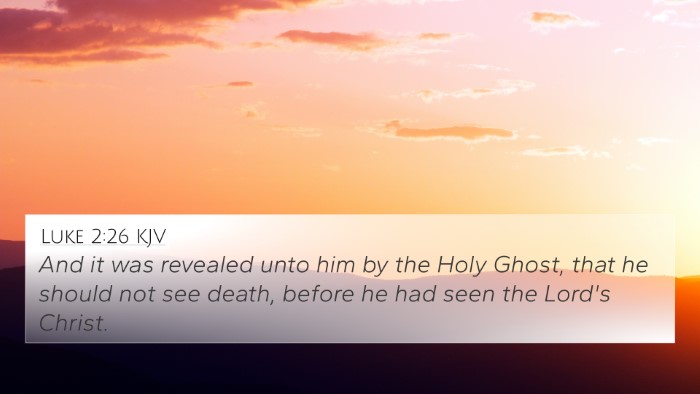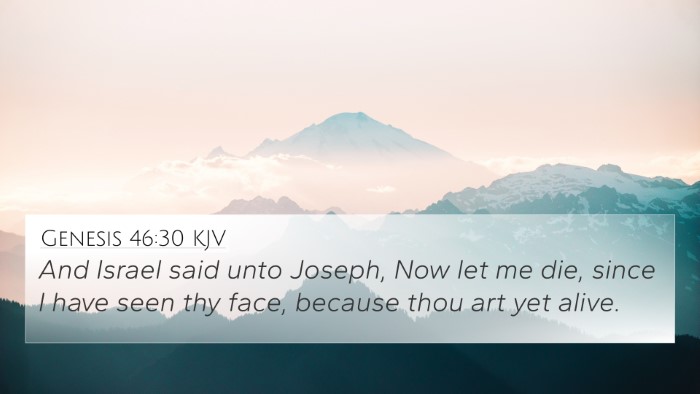Understanding Luke 2:29
Luke 2:29 states: "Lord, now lettest thou thy servant depart in peace, according to thy word." This verse is part of the joyous canticle of Simeon, a pivotal moment in the life of Jesus as he is presented in the Temple. It signifies Simeon's acknowledgment of Jesus as the long-awaited Messiah and his readiness to depart from this life having seen God's salvation.
Summary of Meaning
This scripture encapsulates themes of fulfillment and hope, demonstrating Simeon's faith and the divine promise that he held. The following insights drawn from public domain commentaries will aid in a deeper understanding of this verse.
Insights from Commentaries
-
Matthew Henry's Commentary: Henry emphasizes Simeon's role as a model of faith. He points out that Simeon had been waiting for the consolation of Israel, and upon seeing Jesus, he felt complete peace. This peace stems from fulfilled promises and the recognition of Jesus as the Savior.
-
Albert Barnes' Notes: Barnes elaborates on the phrase “depart in peace,” highlighting that Simeon’s life had reached its purpose. With the sight of Jesus, Simeon expresses his readiness to leave this world, signifying the profound connection between hope and fulfillment of God’s promises.
-
Adam Clarke's Commentary: Clarke brings attention to the spiritual significance of Simeon’s declaration. He suggests that the peace mentioned is the peace of a righteous man who has fulfilled his duty and can now rest in the assurance of salvation brought through Christ.
Bible Verse Connections
Luke 2:29 can be cross-referenced with several other scriptures that enhance its meaning and context. Below are some pertinent cross-references:
- Isaiah 40:1-2: "Comfort ye, comfort ye my people..." - This passage sets the stage for the coming of the Messiah, echoing Simeon’s role in recognizing Jesus as the Comforter.
- Luke 2:30: "For mine eyes have seen thy salvation." - Directly follows verse 29, reinforcing the theme of seeing God's promise embodied in Jesus.
- John 1:29: "Behold the Lamb of God, which taketh away the sin of the world." - Relates to the acknowledgment of Jesus' significance in God’s plan for salvation.
- Acts 3:26: "Unto you first God, having raised up his Son Jesus, sent him to bless you..." - Highlights Jesus' role as the blessing to the people, similar to Simeon’s declaration.
- Romans 15:8-9: "For I say that Jesus Christ was a minister of the circumcision for the truth of God..." - Connects Jesus with the promises made to the patriarchs, fulfilled in the Gospel.
- Hebrews 11:1: "Now faith is the substance of things hoped for..." - Reflects Simeon's faith and the assurance of his hopes realized through Jesus.
- Philippians 1:23: "For I am in a strait betwixt two, having a desire to depart..." - Mirroring Simeon's readiness for departure, this passage explores the theme of life, death, and expectation of eternal peace.
Thematic Connections
The themes found in Luke 2:29 can also be connected to broader biblical themes through cross-referencing:
- Hope and Salvation: The promise of salvation is central to many scriptures, linking to verses that discuss the coming Messiah.
- Divine Appointment: Various scriptures discuss the appointed time of God’s actions, showing Simeon's anticipation and fulfillment of God’s timing.
- Faith and Fulfillment: The act of waiting with faith, as Simeon did, resonates throughout biblical narratives, highlighting God's faithfulness.
Conclusion
Luke 2:29 serves as a profound reminder of the fulfillment of God’s promises and the peace that comes with recognizing His promises in Jesus. It highlights a deep connection between hope, faith, and the joy of seeing God's salvation. For further exploration, one can utilize tools for Bible cross-referencing, such as a Bible concordance or Bible cross-reference guide, to uncover more connections between scripture.
Further Study Recommendations
To deepen your understanding of this verse and its implications:
- Engage in cross-reference Bible study to explore thematic connections.
- Utilize a Bible concordance to find related verses.
- Practice cross-referencing Bible study methods with other Bible verses that discuss peace and fulfillment.









